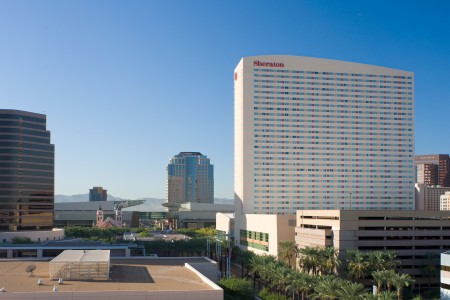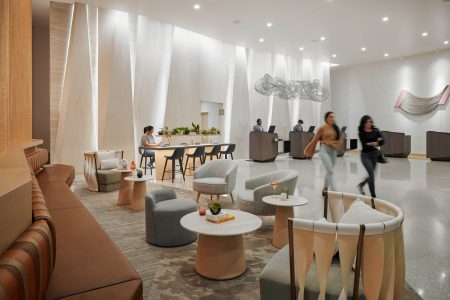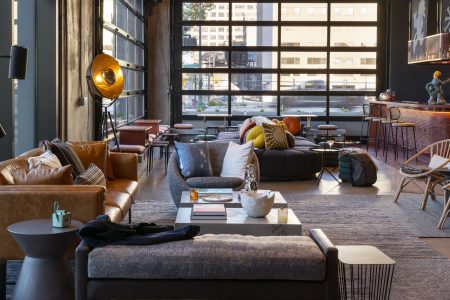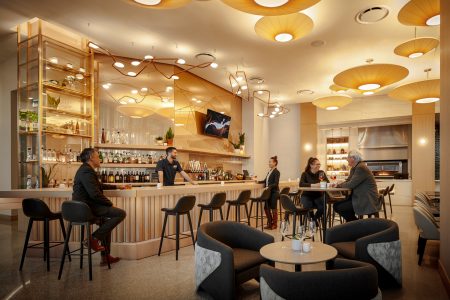Is “Local” the New Hotel Brand?

Uncover the captivating reinvention of the Westin, Tempe, a traditional hotel brand that is inspiring newfound allure among hoteliers and travelers alike. Join RSP’s Associate Principal Joe Ellis as he shares insightful perspectives on this remarkable transformation.
It was 1989. It sounds like a long time ago, now. I was a few years into my career as an architect when the hospitality industry went in an entirely new direction. Many of the biggest hotel companies sold off their real estate assets and reinvented themselves through management and franchise agreements. And that is when the modern hotel brand was really born. It allowed hotel companies to put their indelible, unmistakable mark on a building and live up to their guests’ expectations, whether they owned the building or not.
This, of course, was a double-edged sword. The strict design guidelines that came with the brands brought a level of consistency. Travelers knew exactly what they would get when they walked in the door. At the same time, many travelers were looking for a more memorable experience without having to go to a luxury-tier property to get it.
As hotels go up the scale from budget to luxury, there is much more leeway. At the highest levels, each hotel is a truly unique, highly localized experience. What we’re seeing now is that brands that used to dictate every square inch of a space, from fixtures to furnishings to colors, are seeing that adding in elements from the local community and culture, and offering a certain amount of latitude to the design team, can make their properties more welcoming and draw in new guests.
The Business Side of Leisure
Most people are tired of talking about the pandemic. But it’s an inescapable fact that some things are dramatically different than they were in 2019. One of those things is business travel, which the AHLA says will continue to be down more than 20% for the foreseeable future. Brands that used to cater to business and leisure travelers in equal measure are finding that they will have to rethink how they market and present themselves to make up for lost business travel. One of the biggest ways to do that is through adding a sense of community that is personalized and relevant to the city and neighborhood it calls home.
A few years ago, “soft brands” became a buzzword in the industry—a brand within a brand that has more design flexibility. But I’m suggesting that everyhotel brand should be moving in this direction.
Hotel Brand Trajectories: The Good, The Bad, the Irrelevant
Every brand, in the hotel industry or otherwise, has a trajectory. In the beginning, it’s about creating standards and rigidly employing them. As the brand becomes more well known, the standards become second nature. Then comes the tricky part. The point where a brand begins to feel stale. That is when one of three things will happen.
The first is that the brand will become so stale that it becomes irrelevant. The second is that, as the original creators and protectors leave or retire, the brand is left leaderless. This creates a vacuum that allows it to spin off in countless directions until the brand no longer means anything. And the third possibility is a purposeful, intentional brand refresh. This is, of course, the best possible scenario. This is where many of today’s savvier hotel brands are. They see that moving with the times and bringing some local flavor and culture down from the luxury-tier properties and into their mid-tier brands is the way to adapt to changing consumer tastes and demands.
Case in Point: The Westin Tempe
The Westin Tempe is just one instance where an established and well-known brand gave our design team the latitude to work in local elements and make the property a true part of the community. The hotel is located in Tempe’s transportation district; the city wanted all the buildings to emulate the two-story shops along Mill Avenue. The 18-story hotel tower didn’t exactly fit that vision. We knew it couldn’t stick out like a sore thumb. We worked with the community and the client to bring the columns out to the street, making it feel like the scale had been broken down to a more accessible level. The arrival sequence was really important too. We married this lower-scale streetscape with Westin’s inclination for an entrance and arrival that feels a little grander and more special than giving the hotel direct street access.
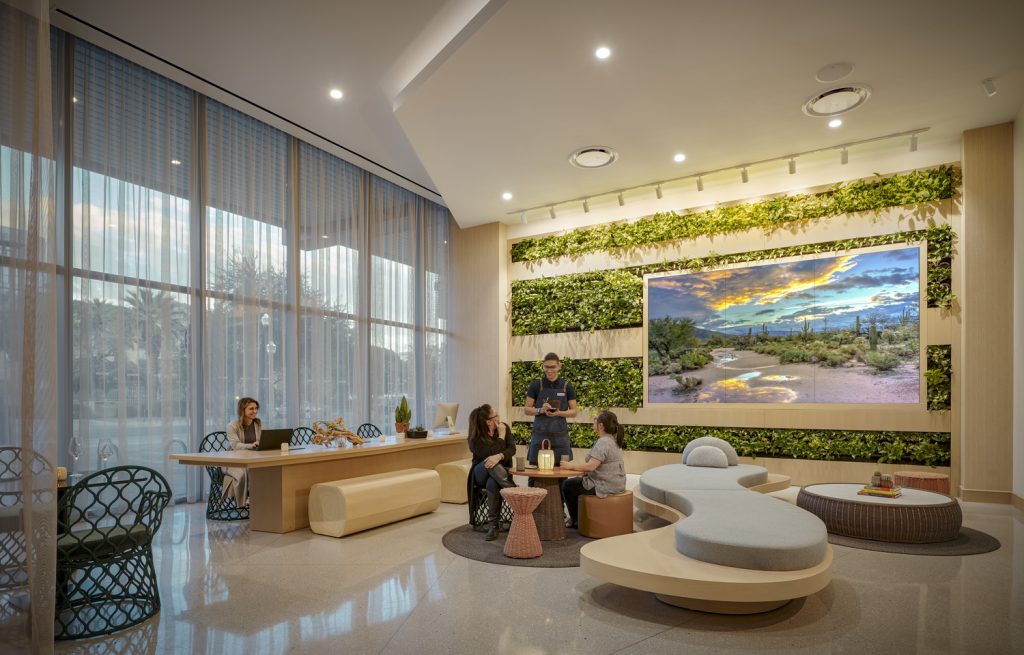
A big part of Westin’s brand is connecting with nature. We made that brand element local by giving it context within the desert landscape. We used materials, a living wall, graphics, artwork and architectural lines to make that distinctive connection to the hyper-local environment without sacrificing anything about Westin’s brand.
First Steps Toward Local Branding
Let’s be clear—hotel brands aren’t going anywhere. But one of the ways they can attract a new type of guest and capture a greater share of the leisure travel market is to add more local elements. So, where to start? These are some of the first things we think about when engaging with a new project.
Know When to Embrace Inconsistency
The nature of any brand is consistency. As you create that consistency, the design challenge is to make each property feel unique. Always think about the brand promise and live up to that. Then consider being more open to local materials, art, landscaping, food and architectural details.
Consider Accessibility, Arrival and Scale
On the architectural side, we think about the scale of the building. Does the standard prototype fit the contextual relationship of the street and the neighborhood or would you be better off thinking about it differently? Above all, it has to work from a pedestrian point of view and an urban point of view.
Make the Functionality Flexible
Hotel brands have spent a lot of time understanding their product and how it works best. We certainly understand that. That’s why we are seeing a bigger trend of creating flexible environments that work in different contexts at different times of day. A morning coffee bar can be designed in a way that it also works as a lunch counter and a great spot for cocktails. A library can be a cozy Sunday brunch nook or a place for a business lunch. This is an especially good option for properties in urban areas with limited space. It has the added benefit of allowing hotels to “grow into” their communities and adjust to the needs of different guests.
Don’t Underestimate Programming
Events, marketing, restaurants and bars go a long way to making a hotel a beloved part of a community, both local and online. Boutique and luxury properties have spaces and designs that are ideal for social media posts. By upping the ante on programming, mid to upper-tier properties can also take part in the push for social media influence. What great branding always comes down to is knowing the audience. As travel becomes a mainstay once again, hotel brands can differentiate themselves by offering today’s guests a more local, memorable experience beyond the upper echelons of hospitality properties. Having worked with some of the best brands in hospitality for a few decades, I have no doubt that they will find the way forward.


